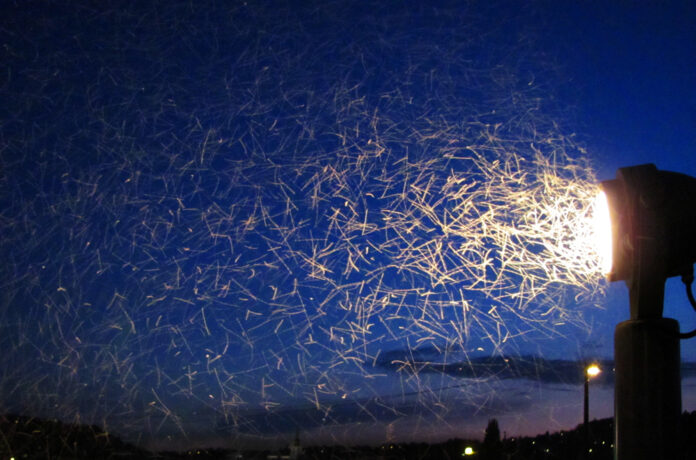They say there’s no such thing as bad publicity, but that might not be true for LED lighting!
Dr. Bulb here to debunk another over-popularized and falsified rumor about LED bulbs. Ever since the scientists who created the blue light LED won the Nobel Prize in Physics, LEDs have been attracting different kinds of news, both positive and negative. A researcher discovered blue tinted leds attract more insects than other bulbs. As a result, these bulbs could potentially be more destructive to ecosystems.
A study, which was recently published in Ecological Applications, claims that LED lights attract more insects than other light sources. To test this theory, researchers Stephen Pawson and Martin Bader conducted an experiment that compared how many insects were attracted to LED and sodium vapor lamps. During the experiment, the researchers placed both types of lamps in a field at night along with fly-catching sheets of sticky paper. The researchers then counted how many insects each paper collected. The paper next to the LEDs had about 48 percent more bugs than those next to sodium vapor lighting.
What the study fails to mention is that there are LEDs made specifically to help avoid this issue. Light pollution and its damaging effects to the environment are nothing new. In previous blogs, I discussed how light pollution is harmful to different types of animal habitats, including those of insects, birds and turtles. Fortunately, new LED technology has allowed lighting manufacturers to take these habitats into consideration.
The bulbs discussed in the study use high Kelvin LED chips and light sources, which have higher efficacies and lumens per watt. However, high Kelvin LEDs are not the only types of LEDs available and they’re not necessary to be used Many lighting companies offer different types of Kelvins for the LEDs inside their luminaires. Access Fixtures recently announced a line of new wildlife-friendly luminaires that use amber LEDs, which protect wildlife with all the benefits of LED lighting. While this wavelength is visible to humans, it is not visible to most species affected by artificial light.
Regardless of the validity of this research, it’s important for property managers to consider all the factors when choosing light sources for a lighting project. LED lighting has countless benefits compared to outdated lighting technologies and are typically the ideal option.



